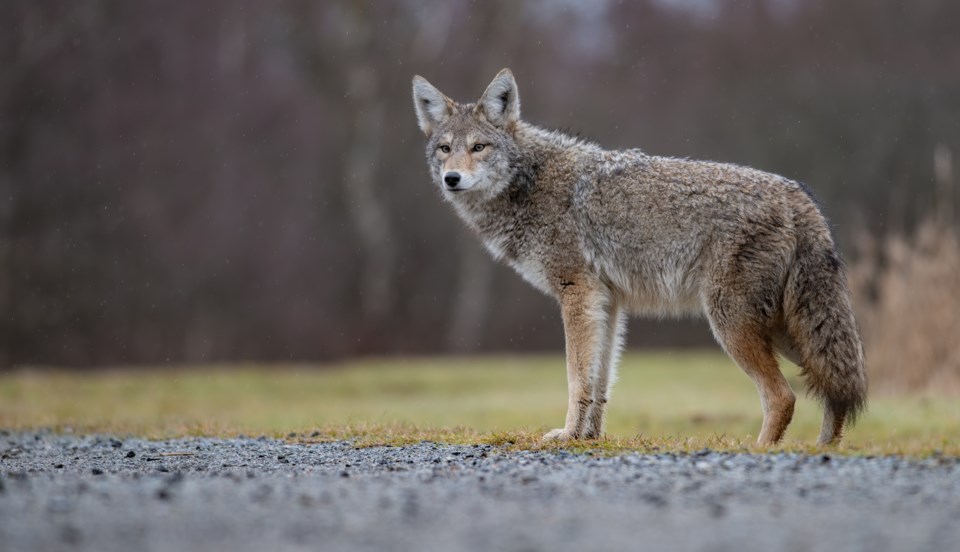The Conservation Officer Service (COS) is urging the Whistler public to stay vigilant after a higher-than-normal number of coyote sightings around the resort in recent weeks.
“Coyotes are up at this time of year and very active,” said Sgt. Simon Gravel with the COS this week.
Gravel said the COS has received “more reports of coyotes than usual” compared to past years. The Ministry of Environment confirmed today there have been 309 reports of coyotes across the Sea to Sky this year, including eight in Whistler.
Just like bears, Gravel said Whistlerites need to understand “how to share the landscape” with coyotes—and that includes managing attractants.
“I know it’s maybe not easy for some people to hear, but attractants like your cats and your pets can be an issue among coyotes,” he explained. “So, if you live in Whistler, you should definitely keep your cat inside and always have your pet on-leash and under supervision. Coyotes are at large and are hunting on a very regular basis.”
Although it may be tempting given coyotes’ similarities to dogs, the public should never feed a wild coyote, as it can turn them more aggressive.
Unlike black bears, the COS will not relocate aggressive coyotes out of the community, as research has shown it is not an effective management technique for the species, for a variety of reasons.
Catching coyotes often involves body-gripping traps, “a dangerous activity that can be extremely damaging and traumatizing,” according to non-profit Coyote Watch Canada, and can also target other species, such as dogs, cats and even people.
Relocation to other coyotes’ territory can also put the animals at risk of conflict, not to mention the threat of spreading disease and disrupting ecological systems.
“A lot of research has been done showing that relocation of coyotes is not successful, and the other aspect of that is they are a big part of our ecosystem—and they’re here to stay,” Gravel said.
Another barrier to relocation is the fact coyotes live in “deeply complex social structures,” Coyote Watch Canada said on its website, and relocation can be a highly traumatic experience for them. “Why they choose to live where they live and among which other coyotes is a personal choice made by that coyote that we as humans cannot currently understand.”
Fortunately, coyotes are receptive to hazing, although keeping pets and food inside is the best way to keep the canines away from your yard. If you do encounter coyotes, first try to yell and wave your arms as you approach. You can also spray the coyote with a garden hose or with vinegar water. Banging pots and pans is another effective technique.
Some important things to remember, courtesy of The Humane Society of the United States:
- Never run away from a coyote.
- If the coyote does not initially leave the area, approach them closer and/or increase the intensity of the hazing.
- If the coyote runs away a short distance and then stops to look back at you, continue hazing until they leave the area entirely.
- A coyote may return to the area even after it has been hazed. Continue to haze the coyote as before, as it usually only takes one or two times to haze the animal away for good.
Learn more at whistler.ca/services/environmental-stewardship/coyotes.





